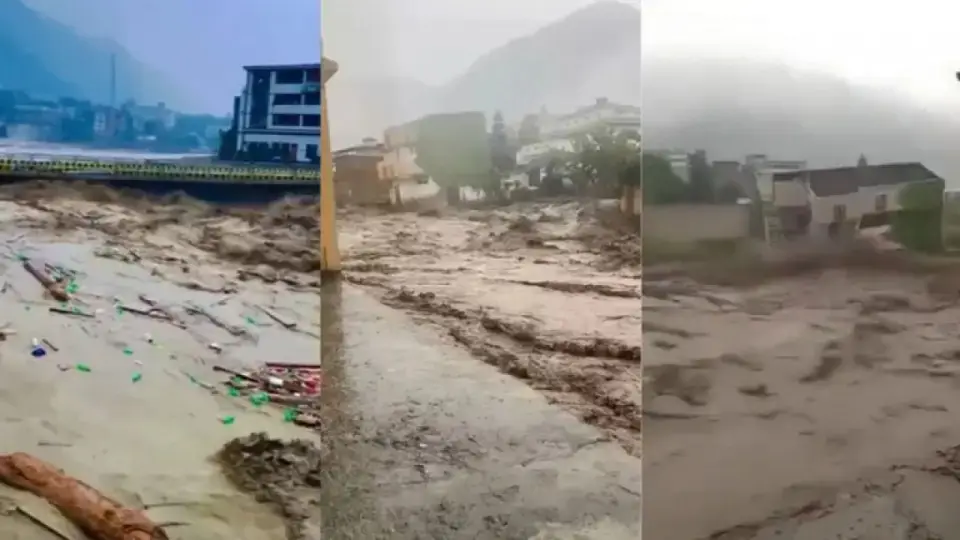
Flood Havoc in Pakistan (Social Media)
International News : Pakistan’s Khyber Pakhtunkhwa province is reeling under a devastating natural disaster. Sudden flash floods and relentless heavy rains have wreaked havoc across the region. According to the Provincial Disaster Management Authority (PDMA), more than 300 people have lost their lives so far. The highest number of casualties has been reported from Buner district alone, where 184 people died. Other mountainous districts, including Shangla, Manshera, Swat, Bajaur, Torghar and Batagram, have also been severely affected. Authorities fear the death toll could rise further as many residents remain missing or trapped under debris and floodwaters.
Apart from Buner, 36 deaths have been reported in Shangla, 23 in Manshera, 22 in Swat, 21 in Bajaur and 15 in Batagram. In Lower Dir, five children drowned, while Abbottabad recorded the death of one child. Entire rural settlements have been submerged, with hundreds of people still unaccounted for. Relief operations are being hampered by damaged infrastructure—roads have collapsed, bridges have been washed away, and many houses lie in ruins. Power supply and communication networks in several areas have also been completely disrupted.
This year’s monsoon, which began in late June, has turned disastrous for Pakistan. Continuous downpours have swollen rivers, while multiple cloudburst incidents triggered sudden flash floods that swept away villages, farmland and infrastructure. Experts point out that cloudbursts, once considered rare, are now occurring with increasing frequency and intensity, amplifying the scale of destruction.
Environmental specialists attribute the growing intensity of such disasters to two main factors: the climate crisis and unregulated development. Rising global temperatures have increased atmospheric moisture, resulting in sudden and extreme rainfall in mountainous regions. At the same time, rampant deforestation, mining, and unplanned construction have disrupted natural drainage systems. With rivers and streams blocked or diverted, floodwaters rush into populated areas, causing widespread destruction.
The Pakistan Army and government rescue teams are engaged in large-scale relief efforts. Helicopters and boats are being used to evacuate stranded people, while thousands have been relocated to temporary shelters where food, water and medical aid are being provided. Despite these efforts, access to many affected villages remains impossible due to landslides, collapsed bridges and washed-out roads. The Meteorological Department has warned of more rain in the coming days, raising fears of further devastation.
Beyond the tragic loss of life, the floods have inflicted massive economic damage. Standing crops have been destroyed, livestock wiped out, and small industries forced to shut down. Thousands of families have been displaced, with many leaving their homes in search of safer ground. Economists and disaster experts caution that it could take years for the affected districts to rebuild and return to normalcy.
With natural disasters striking Pakistan more frequently, experts stress the need for strong global cooperation. While the United Nations and various aid agencies have extended support in the past, long-term strategies are urgently required. Addressing climate change and introducing sustainable development policies in vulnerable mountainous regions have become crucial. Without such measures, experts warn, future disasters could prove even more catastrophic.













Copyright © 2025 Top Indian News
